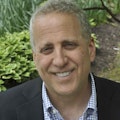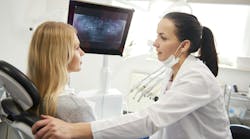The complete exam: The hallmark of a fee-for-service dental practice
When is the last time you had a complete physical? If you’re over 40, you probably see your primary care physician once a year. Think about what your expectations are for your appointment: the doctor checks your blood pressure, listens to your heart, gives you a full blood workup, as well as gives you a thorough physical exam. In addition, a good physician will take the time to discuss any of your concerns as well as goals you may have for your long-term health.
But imagine instead your appointment consists of a tech taking your vitals, a cursory exam by a doctor who may or may not be the same one you saw last time, and very little if any time left for questions or discussion.
The contrast between these two appointment scenarios is like the difference between an initial appointment at a fee-for-service (FFS) practice versus an appointment at a high-volume, insurance-driven office. For the past year or so, I’ve been discussing the benefits of, as well as how to create, a FFS practice.
I firmly believe that the hallmark of such a practice is the complete exam. It’s the defining aspect of a quality dental practice in that it provides the patient with a thorough understanding of the health status of their mouth, as well as suggestions for how to correct any issues found during their initial appointment.
The complete exam consists of five parts: the initial interview; the physical exam; any indicated tests, radiographs, models, etc.; a full photographic series; and the report of findings, also known as the treatment plan presentation. I’ll discuss the first four aspects of the complete exam here, and in my next article I’ll discuss the treatment plan presentation in depth.
The initial interview
Let’s start with the interview. Some dental practices have the dental assistant conduct the initial interview before the dentist conducts the exam. I suppose that works, but to me, this is a missed opportunity to create a relationship with the patient. To be honest, meeting a new patient and leading the initial interview is one of my least favorite parts of my practice. I’m more comfortable dealing with patients I’ve known for years.
But believe me, talking with a new patient about their history, fears, concerns, and most importantly, their goals, is an invaluable opportunity to gain their trust. As we all know, there’s no second chance to make a great first impression.
When you take the time to talk with the new patient, you gain some insight into the kind of patient they might be. I look for ways to relate to them for any recommended treatment, and I look for red flags, with blaming their previous dentists being the number one flag! I have, albeit rarely, refused to see a patient and referred them elsewhere based solely on the new-patient interview.
The physical exam
The second step of the complete exam is the physical exam. Another reason I like to personally conduct the initial interview is because many patients are nervous about being examined, and creating a bond from the start decreases anxiety when it’s time for the exam. Along those lines, it helps to start on the outside of the face and slowly work your way inside. Remember, it’s all about creating a pleasant experience as well as gaining information, so gentle and confident is the key.
The physical exam includes palpation of the muscles of mastication on the outside of the face, as well as a lymph node check. Still working extraorally, the next step is evaluation of the TMJ area (listening and feeling for noises, palpating the lateral pole and retrodiscal tissue, and measuring range of motion). It’s important to communicate with your patient as you go through the exam and assure them that these findings are baseline and not necessarily good or bad.
At this point you want to change your gloves and proceed with the intraoral part of the physical exam. This includes your normal hard tissue (tooth) exam, periodontal evaluation (including recession and mobility), and soft tissue (oral cancer) exam. This is also the time to do an airway evaluation if you’ve incorporated that into your office protocol. It’s somewhere around this time that many patients will volunteer that no other dentist has been this thorough with their exam. Now you know that you’re doing it right!
Complete tests if necessary
The third step of the complete exam is to complete any tests that might be indicated from your physical exam. These include appropriate radiographs, maybe a CBCT, possibly study models, etc. This is the time to gather any additional information that will help you diagnose the patient’s issues to create a sensible treatment plan.
Don’t forget the photos!
The fourth part of the complete exam is a complete photographic series. I can’t stress enough how important this is to the exam process. It’s very hard to have a conversation with a patient about the esthetics of their teeth and treatment for a better smile without a good photographic series taken with a high-quality camera and lens as opposed to a cell phone.
I tell patients that I take these pictures for three reasons: so they can see their teeth from the same angles that I see them; so that in case they have a question about any changes in their mouth in a few years, we can pull up the pictures and compare; and to document recession, gingival health, and wear of the teeth. I think it’s accurate to say that a photographic series is to cosmetic dentistry what mounted study models are to occlusal equilibration and treatment.
Here are a few final points about the complete exam process. It’s most effective when it’s customized to the patient. Not everyone needs mounted models or a full series of x-rays. If a patient has no complaints and a benign dental history, I may choose to spend less time on muscles and joints. This should be an intentional process where you’re looking for clues and putting the pieces together.
The other point is that your confidence is key to having the patient accept your recommendations. Ongoing continuing education to strengthen your abilities to evaluate joints, palpate muscles, or take excellent photographs is key to a successful complete exam.
I will go into detail with the treatment plan presentation (the fifth and final step of the complete exam) in my next article. When you put all these pieces together, you’ll find that patients will respond more positively to your suggestions, and your enjoyment of dentistry will be off the charts!
Editor's note: This article appeared in the May 2025 print edition of Dental Economics magazine. Dentists in North America are eligible for a complimentary print subscription. Sign up here.
About the Author

Robert S. Minch, DDS
Robert S. Minch, DDS, is a graduate of University of Maryland Dental School and has enjoyed a fee-for-service practice focusing on cosmetic and complete dentistry in Baltimore, Maryland, for 40 years. He is a visiting faculty member at Spear Education and teaches Dental GPR residents at Johns Hopkins Hospital. Additionally, he has created numerous study clubs. He can be reached at [email protected].


